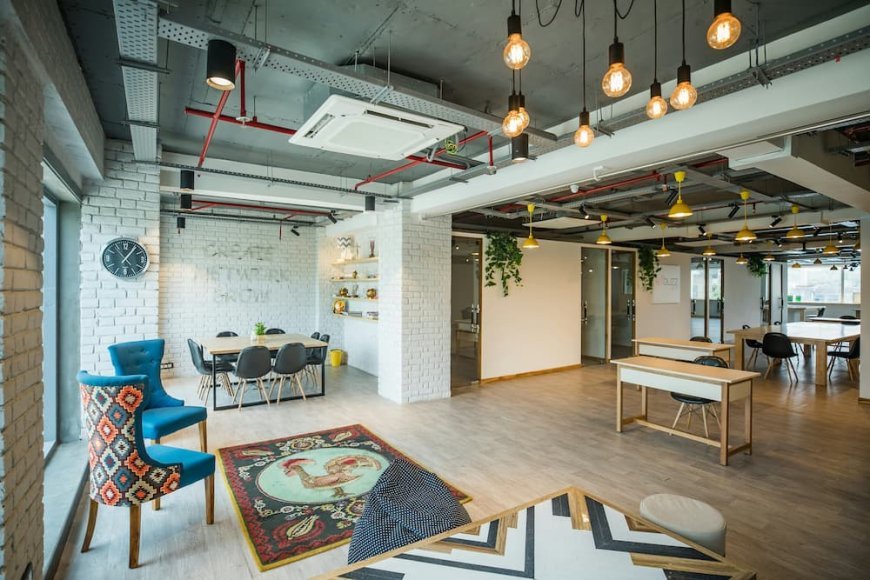The Role of Gamification in Employee Engagement

In today’s fast-paced work environment, employee engagement is a key factor in driving productivity and retention. Traditional methods of motivation, like performance reviews and team-building activities, are no longer enough to sustain employee interest and participation. As a result, companies are looking for innovative approaches to engage their teams.
One such approach that has gained traction in recent years is gamification. The role of gamification in employee engagement has become increasingly important as organizations aim to boost morale, increase motivation, and improve performance through fun, interactive elements. By integrating game-like mechanics into daily work processes, companies can create a more engaging and rewarding experience for their employees.
What is Gamification?
Gamification refers to the application of game design elements and mechanics in non-game contexts to improve user engagement, learning, and performance. In the workplace, gamification involves using techniques like points, leaderboards, badges, and challenges to make tasks and goals more interactive and enjoyable for employees.
By incorporating these elements, employees are more likely to feel a sense of achievement and progress in their work, leading to increased motivation and job satisfaction. Unlike traditional methods, gamification taps into human instincts for competition, rewards, and recognition, which are powerful drivers of engagement.
The Role of Gamification in Employee Engagement
Enhancing Motivation
One of the primary reasons why gamification plays such a significant role in employee engagement is its ability to enhance motivation. When employees see their progress through real-time feedback such as points or badges, they become more motivated to continue working toward their goals.
Gamification taps into intrinsic and extrinsic motivation. For instance, the opportunity to earn rewards and recognition can inspire employees to put forth more effort. Additionally, the competitive aspect of leaderboards can encourage employees to push themselves to achieve better results. This not only makes work more enjoyable but also helps employees stay focused and committed to their tasks.
Boosting Collaboration and Teamwork
The role of gamification in employee engagement also extends to fostering collaboration among teams. Many gamified systems allow employees to collaborate with their peers, complete group challenges, and share achievements. These activities help break down silos and encourage teamwork, making employees feel more connected to each other and to the company as a whole.
When employees work together to achieve common goals, it builds a sense of community and promotes a positive work culture. As employees share in each other’s successes and support one another in challenges, the overall morale of the team improves.
Improving Learning and Development
Gamification is also a powerful tool for improving learning and development within an organization. Employees are more likely to engage in training programs and courses when they are gamified. The use of badges, levels, and rewards makes learning feel less like a chore and more like a fun and rewarding experience.
For example, instead of just watching videos or attending seminars, employees can earn points and unlock levels as they complete training modules. This not only increases engagement with the learning material but also encourages employees to take ownership of their professional development. When training is gamified, employees are more likely to complete courses and acquire new skills that benefit both them and the organization.
Providing Instant Feedback
Another crucial aspect of gamification is the provision of instant feedback. In a gamified system, employees can receive real-time feedback on their performance, allowing them to adjust their efforts and improve immediately. This is a much faster and more effective approach than waiting for periodic performance reviews.
Instant feedback helps employees stay on track, make necessary adjustments, and feel more confident in their abilities. It also provides an opportunity for employers to recognize achievements as they occur, which contributes to a culture of appreciation and recognition.
Benefits of Gamification in Employee Engagement
Gamification offers numerous benefits for both employees and organizations. Here are some key advantages:
-
Increased motivation and productivity: By offering rewards and recognition, gamification boosts employee motivation and encourages higher productivity.
-
Improved job satisfaction: Employees are more likely to feel engaged and satisfied when they are having fun and achieving goals through gamified elements.
-
Better team collaboration: Gamification encourages teamwork and collaboration, helping employees bond over shared achievements.
-
Enhanced learning and development: Gamified training programs make learning more engaging and help employees acquire new skills.
-
Real-time performance tracking: Instant feedback helps employees track their progress and improve continuously.
Implementing Gamification in the Workplace
For organizations looking to implement gamification, there are several strategies to consider. The first step is to identify the goals and objectives of gamification. Is it meant to increase motivation, improve collaboration, or enhance learning? Once these goals are clear, companies can choose the appropriate gamified elements to implement.
For example, an organization may introduce a points-based system where employees earn points for completing tasks, meeting deadlines, or achieving certain milestones. These points could then be redeemed for rewards such as gift cards, extra time off, or public recognition.
Another strategy is to use leaderboards to create friendly competition among employees or teams. By comparing individual or team performance, employees are more likely to be motivated to improve their results. However, it is essential to ensure that the competition remains healthy and does not lead to burnout or unhealthy rivalry.
The Role of Technology in Gamification
Modern technology plays a significant role in enabling gamification. With the help of HR technology platforms, companies can easily implement gamification strategies. Platforms like darwinbox consulting offer solutions that integrate gamified elements into existing workflows, making it easier to track performance, provide feedback, and reward employees.
By using software that tracks performance and progress, companies can automate many aspects of gamification. This reduces administrative overhead and ensures that gamified elements are seamlessly integrated into daily operations.
Overcoming Challenges in Gamification
While gamification offers numerous benefits, it is not without its challenges. One potential issue is ensuring that the gamified elements are fair and inclusive for all employees. It is crucial to create a system where all employees, regardless of their role or experience, can participate and succeed.
Another challenge is maintaining employee interest over time. If gamified elements become repetitive or predictable, employees may lose motivation. To prevent this, organizations should regularly update the challenges and rewards to keep things fresh and exciting.
Conclusion: Leveraging the Role of Gamification in Employee Engagement
The role of gamification in employee engagement is clear: it helps motivate employees, improve teamwork, enhance learning, and provide instant feedback. By integrating game-like elements into the workplace, organizations can create a more engaging and rewarding environment for their employees.
When implemented correctly, gamification can lead to increased productivity, higher job satisfaction, and stronger employee retention. As companies continue to look for new ways to engage their teams, gamification will remain a powerful tool in shaping the future of work.
What's Your Reaction?




























































